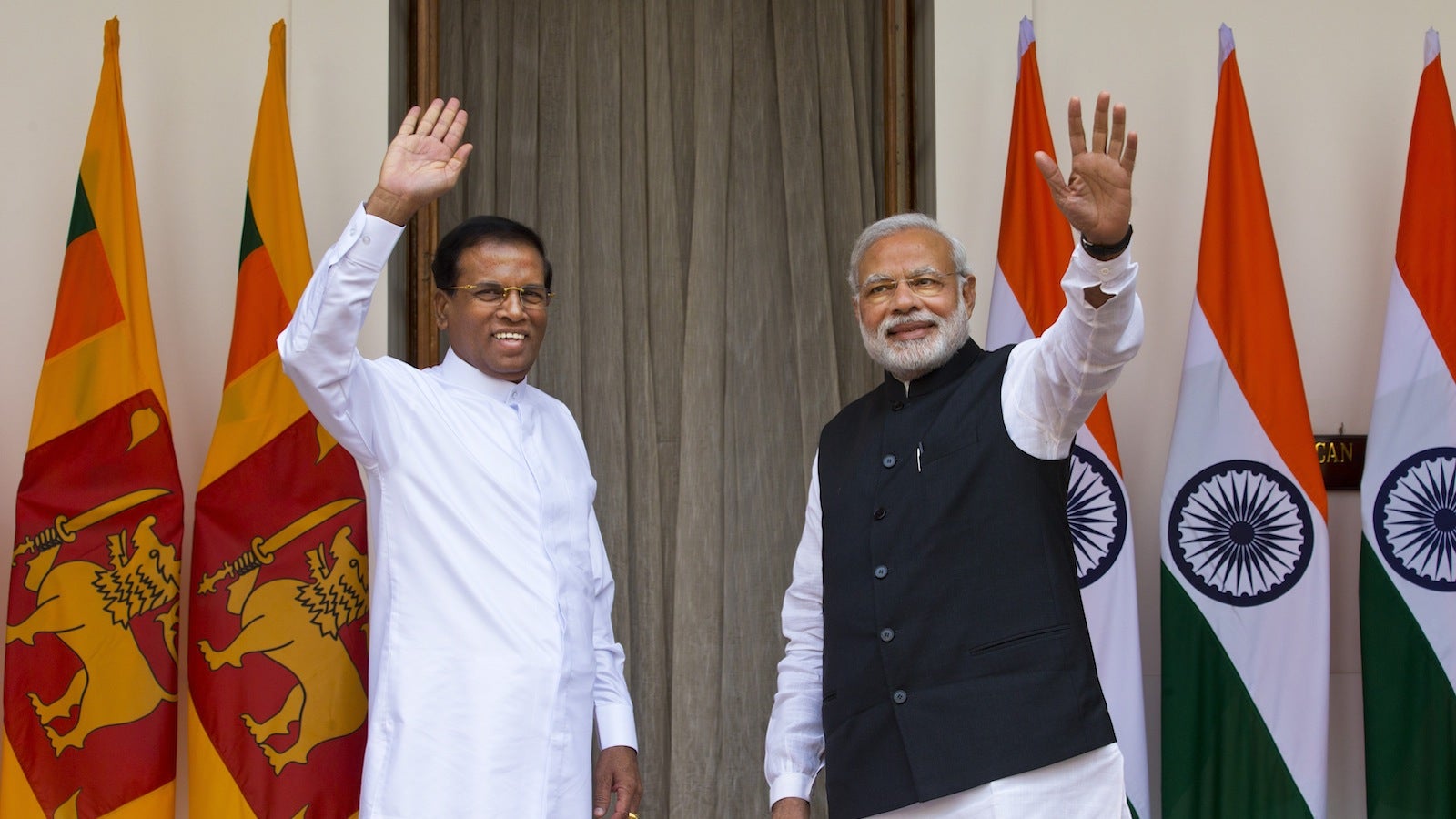With China sidelined, can Modi bring India even closer to its closest island neighbour?
Over the last three decades, from the troubled Rajiv Gandhi years to the present period, the political estrangement between India and Sri Lanka has stayed stubbornly unresolved. There can no greater marker of the frayed bilateral ties between the countries than the fact that no Indian prime minister has travelled to our closest island neighbour in the last 28 years.


Over the last three decades, from the troubled Rajiv Gandhi years to the present period, the political estrangement between India and Sri Lanka has stayed stubbornly unresolved. There can no greater marker of the frayed bilateral ties between the countries than the fact that no Indian prime minister has travelled to our closest island neighbour in the last 28 years.
Now, as prime minister Narendra Modi begins a two-day visit to Sri Lanka on March 13 as the last leg of his three-nation Indian Ocean foray, there is a chance to remedy this lapse. Hopefully the tour and the new dispensation in Colombo will lay the foundation for better bilateral relations and a summit-level engagement to iron out the many dissonances that have soured the relationship.
During his visit to the island nation, Modi is slated to commission a number of development and rebuilding projects enabled by Indian support, including a railway track in Talaimannar, inaugurate a cultural centre in Jaffna, and hand over 20,000 houses built by India in the Northern Province. It is a measure of the importance being given to this visit by Colombo that Modi has been invited to address the Sri Lankan parliament—the first time that such an honour has been accorded to an Indian leader. In another first, Modi will address a long-festering grievance by visiting the memorial to the Indian Peace Keeping Force outside Colombo that pays homage to the Indian soldiers who lost their lives in the ill-conceived military operation in the late 1980s.
What may also go some way in healing the ties is the recent political shift in Sri Lanka. Years after crushing the Tamil Tigers in a bloody civil war, the country went through an unexpected transition from the Mahinda Rajapaksa government to that of Maithripala Sirisena. While the relations with India deteriorated during Rajapaksa’s tenure, the new president, Sirisena, has shown a keenness to mend them again.
For him and Modi, there will be a host of issues to address. The tension in the ties stem from Chennai’s demands over the Sri Lankan Tamils, the perception about India and the Tamil Tigers, the role of China in the island nation’s maritime domain, and the contested fishermen claims. The last strand in particular has received great visibility in India in recent times due to some intemperate remarks by Sri Lankan prime minister Ranil Wickremesinghe. The Modi visit may help both sides arrive at a more manageable policy framework on this subject.
However, this emotive issue of fishermen should not distract them from the deeper import of the Modi visit—which is to restore empathy in the bilateral ties. The entire chapter of the Liberation Tigers of Tamil Eelam and its messy aftermath should serve as a caution against the challenges to, and the limits of, India’s regional diplomatic efficacy and the need to avoid imprudent regional politico-military initiatives.
Suffering from sea-blindness
During Sri Lanka’s estrangement from India, and particularly during the Rajapaksa years, Colombo has looked to China and even Pakistan for critical political and military support. This has been most evident in the maritime domain, as China emerged as a major investor in the Sri Lankan port sector over the last decade. While this was rationalised as being part of the trade network devoid of security and strategic import, the unease in India was palpable. More so after Chinese submarines docked in Sri Lanka.
Fortunately for India, that dynamic is changing.
While China is determined to extend its footprint in the Indian Ocean Region and has been wooing many South Asian littorals and Indian Ocean island states, its overbearing presence has caused considerable anxiety in these countries. Both Sri Lanka and Myanmar have in the recent past either cancelled or put on hold major Chinese-driven infrastructure projects. The Sirisena government, for instance, is reviewing many China-related deals that were cleared by the Rajapaksa family in an opaque manner, because of which currently the Colombo port development project is on hold—much to Beijing’s chagrin.
Modi’s three-nation visit, including to Seychelles and Mauritius, will initiate a maritime foray into the Indian Ocean that is long overdue, redressing the tenacious sea-blindness that has been a leitmotif of India’s foreign policy. Delhi has been oblivious to the vast maritime potential that the Indian Ocean represents. Indeed, if it has been spurred into action, it is because of Beijing’s ambitious Maritime Silk Road unveiled by president Xi Jinping.
The tour, nevertheless, will be the start. The real hard work will begin after Modi concludes his Sri Lanka visit and the time comes to deliver on the many commitments—one of India’s abiding inadequacies in nurturing bilateral relations. Colombo offers Delhi an opportunity to burnish its profile as an empathetic alternative to what China brings to the regional calculus. The challenge for India will be to arrive at a cooperative multilateral framework wherein the smaller nations are not forced into a binary cul-de-sac that pits India against China.
This post first appeared on Scroll.in